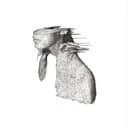Understanding the A Mixolydian Mode
The A Mixolydian scale follows the interval pattern 2-2-1-2-2-1-2 (whole-whole-half-whole-whole-half-whole), producing the notes A, B, C♯, D, E, F♯, G, A. As the fifth mode of D major, it begins on the dominant (fifth) degree of that parent scale, sharing all the same notes but establishing A as the tonal center. The defining feature is the natural seventh (G), which would be G♯ in A major, creating the signature Mixolydian sound that's simultaneously bright and unresolved. This single alteration—lowering the seventh by a half step—transforms the conclusive character of A major into the open, modal quality that makes Mixolydian essential for folk traditions and groove-based rock music. The scale naturally contains an A7 chord (A-C♯-E-G), which forms the harmonic foundation of its dominant character and explains its ubiquity in Celtic reels, jigs, and rock anthems.
A Mixolydian in Celtic Music and Folk Traditions
A Mixolydian holds a revered position in Celtic music traditions, where it forms the backbone of countless Irish reels, Scottish strathspeys, and traditional dance tunes. The scale's bright yet ancient-sounding character connects directly to pre-functional harmony, where modes rather than major-minor tonality governed melodic construction. Fiddle players, flute players, and accordion players in Celtic traditions favor A Mixolydian because it sits naturally within comfortable fingering patterns and takes advantage of resonant open strings on violin and mandolin. Characteristic melodic patterns emphasize the movement from the sixth degree (F♯) to the flattened seventh (G), creating the distinctive sound that immediately identifies a tune as belonging to the Celtic tradition. This same modal quality attracted rock musicians like The Grateful Dead, Phish, and jam bands who incorporated Celtic melodic ideas into extended improvisational explorations, demonstrating A Mixolydian's versatility across traditional and contemporary contexts.
Chord Progressions and Harmonic Applications
The quintessential A Mixolydian progression is I-♭VII (A major to G major), which immediately establishes the modal sound and creates the archetypal Mixolydian rock feel found in countless classic rock songs. Other effective progressions include I-♭VII-IV (A-G-D), the modal vamp I-♭VII-♭III (A-G-C), and more complex circular progressions that incorporate multiple diatonic chords. The scale works perfectly over A7 chords, providing resolved yet open harmonic color that sustains indefinitely without needing traditional cadential resolution. Compared to A Dorian, A Mixolydian has a brighter, more optimistic character due to its major third (C♯ instead of C natural), while sharing the same modal ambiguity through the flattened seventh. This makes it excellent for creating uplifting, anthemic rock progressions and joyful Celtic dance tunes that maintain forward momentum without feeling harmonically closed. In blues contexts, A Mixolydian provides the perfect melodic framework for soloing over A7 dominant chords, especially when combined with blues scale elements.
Learning Tips for Piano and Guitar Students
For pianists, begin by playing the D major scale from A to A, which automatically produces A Mixolydian. This parent scale approach helps visualize the modal relationship and understand why A Mixolydian contains two sharps (C♯ and F♯). Practice the scale in both hands across two octaves, paying special attention to the natural G to internalize the flattened seventh sound. Use fingering: right hand 1(A)-2(B)-3(C♯)-1(D)-2(E)-3(F♯)-4(G)-5(A); left hand 5(A)-4(B)-3(C♯)-2(D)-1(E)-3(F♯)-2(G)-1(A). Set a metronome to 60-80 BPM and practice ascending and descending patterns while consciously listening for the dominant seventh quality. Improvise over an A7 chord or a simple A to G progression to develop your ear for the modal character, exploring melodic phrases that emphasize the characteristic F♯ to G motion that defines Mixolydian melodies.
Guitarists benefit tremendously from learning A Mixolydian due to the key's natural resonance with guitar tuning, where the open A string serves as a convenient drone and reference point. Visualize the scale as A major with a lowered seventh (G♯ becomes G natural), or use the fifth position of the D major scale pattern starting from A. Practice in multiple positions across the fretboard, and explore how the open A and E strings can be incorporated into licks and riffs for added resonance and Celtic character. Study traditional Celtic tunes in A Mixolydian to understand authentic melodic patterns and ornamentation techniques, then apply these ideas to rock and jam band contexts. Compare A Mixolydian directly with A Dorian by alternating between the two scales, noting how the single note difference (C♯ vs C natural) creates dramatically different emotional colors—this comparison develops modal awareness and expands your improvisational palette.
Modal Relationships and Creative Applications
Understanding A Mixolydian's relationships to other modes and scales unlocks creative possibilities for composition and improvisation. While derived from D major, it shares all but one note with A major (G natural instead of G♯) and sits tonally between major brightness and the darker quality of A Dorian. Modal interchange techniques allow you to borrow chords from parallel modes—mixing A Mixolydian with A Dorian creates sophisticated harmonic movement by alternating between major and minor thirds (C♯ vs C natural), adding chromatic color and emotional depth to progressions. Advanced applications include using A Mixolydian as the foundation for extended modal jams in the jam band tradition, creating polymodal textures by layering different modes, or employing it over dominant seventh progressions in blues and jazz contexts. The scale appears across diverse genres—Celtic folk, rock, blues, jam band music, and even country—making it one of the most versatile and musically rewarding modes to master, offering both traditional authenticity and contemporary creative possibilities.





